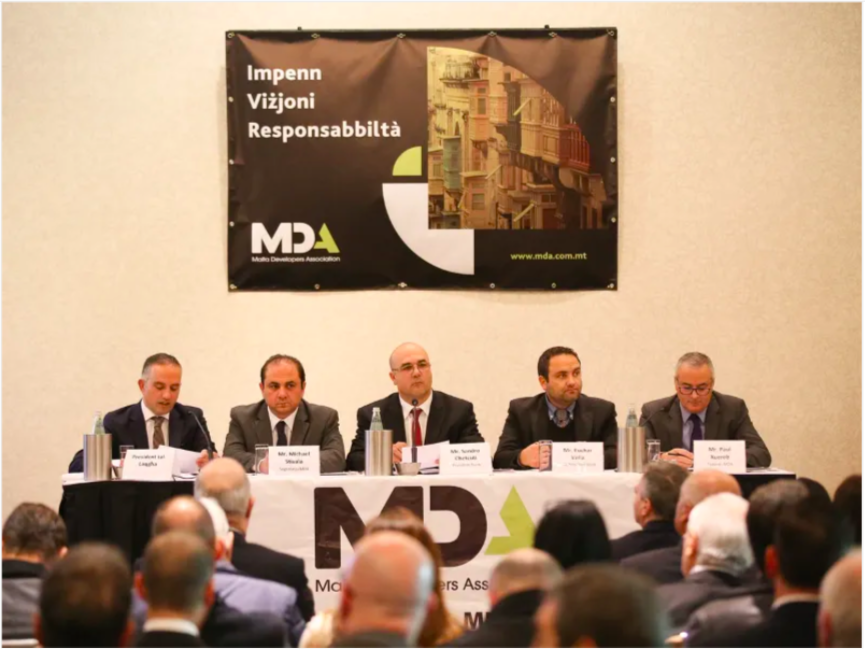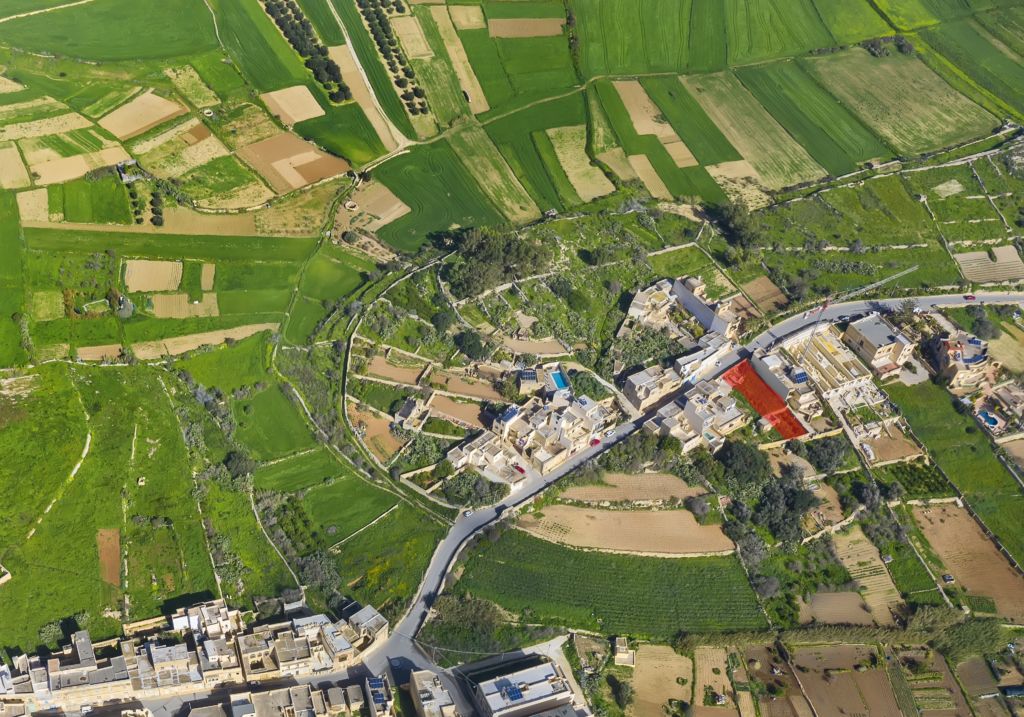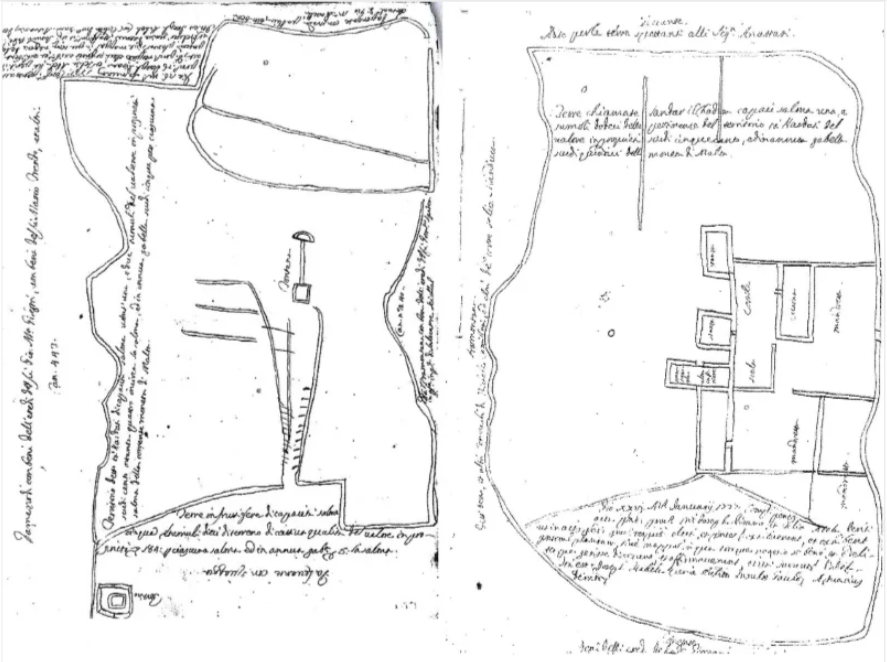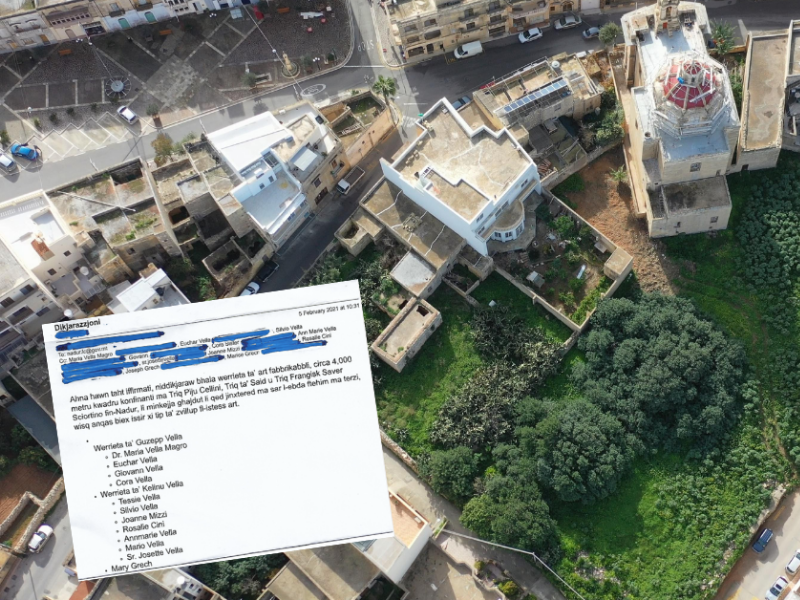A dozen Nadur residents – including the Karkanja siblings who have been the subject of controversy over seemingly conflicting roles in the Gozo grab saga – have filed counterclaims against the medieval foundation that registered large lands in Nadur in its name.
Since the government is unlikely to revoke the questionable registration, according to well-informed sources, the stage is being set for a major court battle with the foundation, or benefice, that is claiming swathes of Gozo land on the basis of old deeds.
Among those who filed counterclaims, or ‘cautions’ as they are technically known, is the Karkanja family which holds the largest plot in the registered lands in Nadur. The Karkanja land is undeveloped, unlike the land of many others who have their only homes built on it.

In a letter sent to The Shift and Lovin Malta, which he described as a Right of Reply, one of the Karkanja siblings – developer Euchar Vella – urged residents “not to succumb to individually reach agreements,” since a court case on the same matter in 1972 was unitedly won and can be won again.
“All my extended families are united against this as we are the most affected, owning the largest plot. In fact, last week we issued a joint declaration sent to Nadur Local Council after the same council and many others asked about the gossip doing the rounds that we have somehow reached a deal with the Abbazia [the old name for the office of the benefice],” he said, attaching evidence of his and his family’s objections.
Last Tuesday, The Shift and Lovin Malta reported these rumours have intensified since Vella, who is one of Gozo’s largest developers, applied to build a block of 10 flats on land obtained from the same foundation in Qala.

Euchar Vella’s sister, the notary Maria Vella Magro, has been preparing notarial documents for residents affected by the land dispute.
In his letter, Vella admitted that the “situation is awkward,” adding that he entered into a “preliminary agreement on two plots in Qala in April 2019” – well before the lands in Nadur were registered by the foundation. He clarified that he will defend his family’s properties in Nadur.
The family’s plot in Nadur is 4,000 square metres, according to submissions made at the Land Registry last Monday, and is situated behind a private church build by their ancestors a century ago.
The foundation, called Beneficcju ta Sant Antonio Delli Navarra, was founded in 1675, and the people currently behind it are six Sliema siblings, retired magistrate Dennis Montebello, and senior lawyer Carmelo Galea.
Dozens of houses sit on the registered lands in Nadur, and the recent contacts by the foundation asking homeowners to pay between €10,000 and €70,000 for out-of-court settlements has triggered a new sense of outrage.
The stakes are high: the land registered a year ago is worth many millions, the Karkanja plot itself is worth a few million.
Vella also calls on political leaders to make good on their “promise to withdraw the registration.”
As recently as three weeks ago, Parliamentary Secretary Alex Muscat said in parliament that he is still seeking “legal advice” and intends to “turn back the clock” and get “registrations revoked.” Sources have also said that Gozo Minister Clint Camilleri has also been privately telling constituents that the government would resolve their situation upon filing counterclaims.
Yet despite politicians’ promises, well-informed sources have told the investigation that extensive high level discussions over a span of months have led to an impasse on the question of revocations.
The government’s legal advisors are reluctant to advocate revocations partly on the understanding that the function of the Land Registry is to “regulate the registration of title to land”, not to arbitrate on, or become embroiled in, claims of land ownership. The understanding is that this is a matter for the courts.
Moreover, legal advice given to the government suggested that residents in Nadur can make use of remedies enshrined in the Land Registration Act – to make counterclaims or cautions, even to take the matter to court for resolution.
Legal experts advising the investigative team said the legal point made that recourse to remedies exists does not settle questions on the approved registrations, and whether these could be left undisturbed.
When the Latin deeds were translated, months after the approval of the registrations, it emerged that the size of the land leased in 1737 was around 2,000 square metres smaller than the land marked by the foundation in its application.

Asked if this discrepancy constitutes the ‘error, mistake or omission’ specified in the law that would justify revocation, Land Registrar Claude Sapiano said that in keeping with “past experience in the Land Registry it is normal that on such a great area of land and considering that the measurements were originally taken
“One must be realistic and compare the instruments of that age with today’s technology which is completely different,” Sapiano added. He also explained that ‘cautions’, or counterclaims by residents only serve to “freeze” the registration.
Around 12 cautions have been filed to date, including the latest one by the Karkanja family.
Sapiano said: “That means that no land transfers can happen on that property affected by cautions. Then we leave it up to the parties to resolve the registration between them. In most cases, the dispute ends up in court, and the Land Registry would rectify the registration and issue a land title on the basis of a court judgement.”
This is part of an investigative series being published jointly by The Shift and Lovin Malta about an ongoing land dispute in Gozo. The investigative team had strategic and research input by Caroline Muscat and Chris Peregin. More updates to follow.


Recent Comments